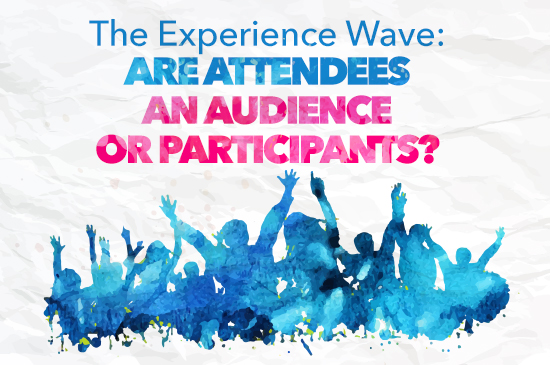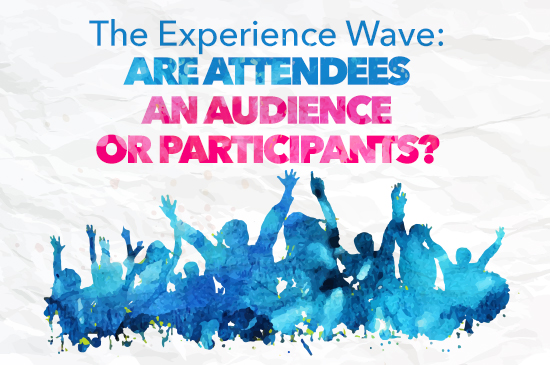Engaging Events is one of the most useful educational tools I have seen that spells out how event planners can create – as Kevin Jackson refers to in the introduction of ‘Engaging Events’ – memorable moments for attendees. On reflection, and having studied the e-book, I would like to add in my two-cents worth and critique the way in which event planners can use technology as well as face-to-face interactions to create an attendee Experience Wave.

What Can Henri Lefebvre Offer An Event Planner?
Meet French philosopher Henri Lefebvre and his thesis The Production of Space that considers moments in time; based on perceptions of content (e.g. the conference programme or festival line up), spatiality (the physical environment – venue, decor, location) and form (the aggregation of the content and spatiality).
This is grounded in an attendee’s reality. This is not complicated to understand. The organised moment (or moments) of an event are reconstructed by event attendees into their everyday reality dependent on their past experiences.
These moments can be perishable, ephemeral or unique experiences – memorable or not – but dependent on the way they construct the moments of an event that is grounded in their past and present experiences. How can Lefebvre inform the way in which we plan an event?
Artistic Productivity
As an event planner you construct an event programme. This is artistic productivity – a function of a creative industry. It is grounded in your perceptions of your past and present experiences and influences the future experiences you will plan for attendees. But do you plan to create moments in time for an audience or for participants?
Audience implies a one way passive communication whereas participant implies a two-way co-creative active communication. For example watching a stage show or keynote is a passive pursuit, but can become an active one if the audience are asked to participate in a Q&A.
On the other hand collaborative workshops, joining in with a festival’s headline act to sing the chorus to a song, are actions that are actively participative. But when you plan an event, how do you decide whether the whole event should be audience based or participant based? Do you decide you want to construct a programme that contains both active participatory and passive audience experiences?
The Experience Wave
It’s pretty simple to figure out that from the time an attendee turns up at the front door of the venue they begin participating in the entry process. Through technology this process may be fairly passive by using a QR code on a mobile device to get through an automated barrier or active when a face-to-face interaction ensues as the guests give names to a greeter who has a paper guest list. Think of these interactions as differing process scenarios when planning your event programme and make an analysis based on the utilisation of both technology and face-to-face interactions.
As event planners we spend time creating the run sheet to coordinate the various production elements and activities of an event. How many of you create an experience sheet where both active participatory points and passive audience points are constructed? I would say not many event planners do this. This is something that you can work on to create an experience wave – one based on Lefebvre’s construct of moments in time that can create a variety of experiences – each of which has its own particular unique form (content and spatiality).
It’s as simple as adding an extra column to your run sheet, but based on a through analysis of how you can manipulate form to create an experience wave. But this advice comes with a health warning. For example, creating an experience wave totally reliant on hours of active participation is going to exhaust your attendees. A contrived balance of movement using a combination of passive and active involvement of attendees alongside changes to the content and spatial dynamics of your event is key to create a successful experience wave-form.
The Critique
Using what is termed ‘engagement technology’ to create momentary experiences for attendees is either a passive (watching a keynote via Google Hangout) or active (a collaborative workshop using collaboration software) has its merits. But as Julius Solaris points out in the ‘Engaging Events’ e-book, live interaction with a magician and entertainers who move through a cocktail party engaging with attendees has its merits too.
It’s not just about engagement technology. It’s about a fine balance between the elements of how technology can enhance the attendee experience so that they become active participants and how we manipulate content and spatial dynamics to enhance experiences that are either active or passive.
In Conclusion
As an event planner it’s your job to decipher what your attendees will perceive as the benefits of attending your event. Translating those perceived benefits into an experience wave that is based on both active and passive experience constructs that utilise the elements you can control in terms of content and spatial dynamics is the way in which you can produce a combination of unique moments in time.





